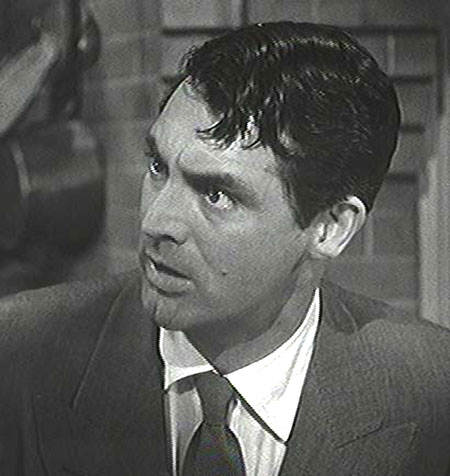
François Truffaut once told Alfred Hitchcock that he felt Hitch made one movie over and over throughout his career. There is a strong case to be made in Truffaut’s favor, especially when one looks at Notorious (1946).
A personal favorite of many critics, namely Roger Ebert and Robert Osborne, Notorious is short on suspense, but large on love. It also takes pieces of film from past Hitchcock films and gives the audience a peek at pieces of film from later Hitchcock films.
The opening shot is of a courtroom. We see inside of the courtroom because a member of the press has opened the door to allow the camera a view. This is similar to the courtroom scene in Frenzy (1972). In that movie the door is opened to the courtroom and we hear the guilty verdict. The drunken driven scene echoes a similar scene involving Cary Grant in North By Northwest (1959). The same film is echoed later when the American agents are gathered in
The Birds (1963) is invoked when Ingrid Bergman and Grant embrace on the hill in
What about the movies preceding Notorious? If you check the films above, you will notice that every one of them was made after Notorious. So where are the old Hitchcock references? Well, Suspicion (1941), also made with Grant, is present in the poisoning scenes. Instead of using a glass of milk to poison the wife, cups of coffee or tea are used. Rebecca (1940) is also prevalent, as Sebastian’s house seems to become another character in this movie. When Ingrid Bergman first arrives in the mansion, she seems overwhelmed, much like Joan Fontaine was when she first arrived at Manderley.
The most famous shot in Notorious is the long crane swoop during the party. The camera begins at the ceiling in the chandelier and comes all the way down, through the guests, into Bergman’s hand where she is holding the magical key. There is a similar shot in Marnie (1964). There are also similarities between both movies during the horse riding scene and at the race track. But the crane shot was first used in a Hitchcock film in 1930’s Murder. In that one the camera swept along a ballroom to focus on a drummer in blackface who had a tendency to twitch his eyes. He was the murderer in the movie and the heroes had to find him.
Above I mentioned the significance of Ingrid Bergman taking the key from Claude Rains. This is a different sort of movie because Bergman essentially plays a stereotypical male character. She is an alcoholic who has a talent for seducing men into giving her what she wants. Typically this is a role that would go to a male heartthrob, but this movie is different in that it puts a female into the role. It makes for a much more interesting and unique story. It is similar to what we have seen before, but different because instead of a male playing with a woman’s emotions, we get the opposite. We also don’t feel too bad for Claude Rains when his fate becomes sealed after Grant takes Bergman from his house. Perhaps we would if the roles were different. I do know that we wouldn’t remember this movie as much had the role been played by a male.













